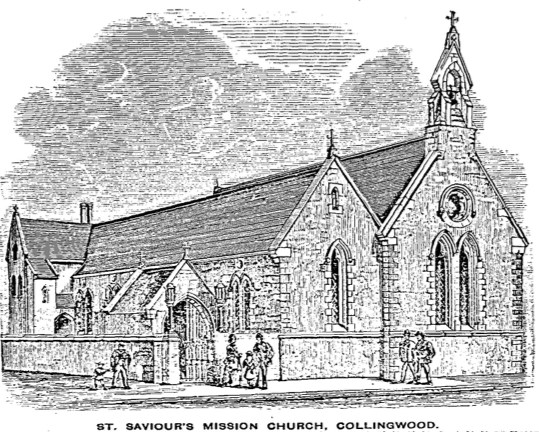Collingwood Notables Database
Leonard Terry
1825-1884
Architect
Terry was one of Melbourne’s notable nineteenth century architects and left Victoria an outstanding legacy of banks and ecclesiastical buildings. He spent the last years of his life at Campbellfield near the Yarra, which he rented from local manufacturer Henry ‘Soapy’ Walker. The house had been built by Lyon Campbell in the 1840s, and would later be home to another noted Melbourne architect, William Pitt.
Terry, a Yorkshireman by birth, arrived in Melbourne in 1853. He was soon employed by architect Charles Laing, and by the end of 1856 had his own practice. An important early commission was the Melbourne Club, built in 1858. Terry became the principal designer in Victoria of banks as well as buildings for the Anglican Church, of which he was appointed diocesan architect in 1860. He favoured Renaissance revival designs, which he used for bluestone warehouses as well as banks. A noted stretch of his banks stands in Lydiard Street Ballarat. In all, he designed at least fifty buildings for all the major banks. In 1874 Percy Oakden became a partner, while Marmaduke, Terry’s son from his first marriage, joined the firm in 1880. Collingwood buildings designed by the firm include Floraston in Victoria Parade (1875) and St Saviour’s Church (1874, 1879).
Terry’s first wife died of ‘brain fever’ in 1862, the day after their sixth child was born, leaving Terry with a numerous and very young family. He married his second wife, also from Scarborough, four years later. The Terrys lived in Gipps Street East Melbourne (in a house of his design) and later Alma Road St Kilda before making the move to Abbotsford. The new house provided them with a more rural lifestyle, perhaps for the benefit of the children. After the major subdivision of this area in the late 1870s, Campbellfield itself remained a substantial gentleman’s residence on three acres of garden, sited to make the most of the view of the Yarra River. They kept a milking cow and poultry, and there were fruit trees and a tennis court. Unfortunately within a few years Terry died of a thoracic tumour at his home. In October 1884 Mrs Terry auctioned her household furniture, livestock, carriage, etc, in preparation for a departure to Europe, while Henry Walker put the house up for sale.
Bruce Trethowan in an article on bank architecture discusses the confluence of gold-engendered wealth, the related expansion of banks, and the presence of exceptional architectural talent which resulted in one of the crowning glories of architectural achievement in Australia (Encyclopaedia of Australian architecture p. 64). Despite his prolific output Terry was of a modest and unassuming nature and is more recognised nowadays than he was during his lifetime. Oakden continued the business after Terry’s death and the firm was later known as Oakden, Addison and Kemp.
Sketch of St Saviour's
Life Summary
| Birth Date | Birth Place |
|---|---|
| 1825 | Scarborough, Yorkshire |
| Spouse Name | Date of Marriage | Children |
|---|---|---|
| Theodora Mary Welch, c. 1838-1862 | 26 June 1855 | Leonard 1856, John 1857, Theodosia 1858, Henry Margrave 1859, Marmaduke 1861, Margaret 1862 |
| Esther Hardwick Aspinall | 29 December 1866 | Esther 1868 and two others |
| Home Street | Home City | Status of Building |
|---|---|---|
| Trenerry Crescent | Abbotsford | Demolished |
| Death Date | Death Place | Cemetery |
|---|---|---|
| 23 June 1884 | Abbotsford |
The Argus; The Age; The Mercury; The encyclopaedia of Australian architecture.

